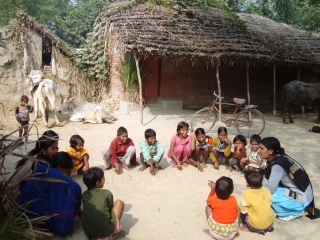Shashwat Sahbhagi Sansthan
Context of Work
 Uttar Pradesh is the most populated state of the country (199 million as per 2011 Census). It is also one of the poorest and most socially backward states of the country. Not only that - the gap of poverty as reflected from the per capita incomes of the country as a whole and Uttar Pradesh is widening with every passing day.
Uttar Pradesh is the most populated state of the country (199 million as per 2011 Census). It is also one of the poorest and most socially backward states of the country. Not only that - the gap of poverty as reflected from the per capita incomes of the country as a whole and Uttar Pradesh is widening with every passing day.
Though official figures of below poverty line people may be debated, according to estimates nearly 30 per cent of the state's population is forced to lead life on an income less than Rs 50 per day. This huge population is more than population of several countries of the world. This is really a challenging situation.
The main district of Shashwat's work - Sitapur - is situated in central Uttar Pradesh, about 90 km from the state capital Lucknow. The Government of India has placed Sitapur district in the list of 100 poorest districts of the country (there are 16 more districts of Uttar Pradesh in this list).
Demographic and other data reveal that
- SCs, one of the most disadvantaged caste groups in the country, constitute neatly one-third of the district's population. Their concentration is more in rural areas than in urban areas
- Sex ratio is unfavourable to women in the district. Sex ratio is still more unfavourable to women in case of SCs. It is, however, less favourable in case of population in 0 to 6 years age group
- Less than half of the population in the district is literate, but in case of females the literacy rate is slightly above one-third. Despite absolute fraction of illiterates in the population, gender gap in literacy is wide and this is quite significant
- Work participation rate in the district is around 30 per cent. This means that around 70 per cent of population depends on this population for its needs. This deteriorates the quality of life
- Nearly three-fifth of population is still engaged in agriculture for its livelihood. The quality of life of most of cultivators is, however, questionable, given the fact that agricultural land is getting fragmented with every passing year. Another one-fifth of population is engaged as farm labour. Thus, agriculture supports as much as four-fifth of the population of the district and block. This points towards moribund state of life in the district.